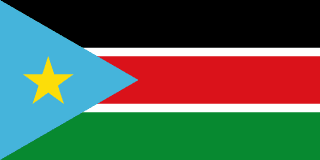South Sudan - Environment

As far as the environment of South Sudan is concerned, there have been . As for nvironment - international agreements, we have; .
About the environment of South Sudan
| Climate | We have hot with seasonal rainfall influenced by the annual shift of the Inter-Tropical Convergence Zone; rainfall heaviest in upland areas of the south and diminishes to the north |
|---|---|
| Revenue from forest resources | |
| Revenue from coal | |
| Waste and recycling | Municipal solid waste generated annually: 2.681 million tons (2024 est.) |
| Total renewable water resources | 49.5 billion cubic meters (2022 est.) |
| Major rivers (by length in km) | |
| Total water withdrawal | |
| Municipal | 193 million cubic meters (2022 est.) |
| Industrial | 225 million cubic meters (2022 est.) |
| Agricultural | 240 million cubic meters (2022 est.) |
| Land Use | |
| Agricultural land | 44.9% (2023 est.) |
| Agricultural land: arable land | arable land: 3.9% (2023 est.) |
| Agricultural land: permanent crops | permanent crops: 0.1% (2023 est.) |
| Agricultural land: permanent pasture | permanent pasture: 40.8% (2023 est.) |
| Forest | 11.3% (2023 est.) |
| Other | 43.8% (2023 est.) |
| Urbanization | |
| Urban population | 21.2% of total population (2023) |
| Rate of urbanization | 4.12% annual rate of change (2020-25 est.) |
| Major urban areas (Pop) | 459,000 JUBA (capital) (2023). |
All Important Facts about South Sudan
Want to know more about South Sudan? Check all different factbooks for South Sudan below.
-
 South Sudan Factbook
South Sudan Factbook
-
 The Economy of South Sudan
The Economy of South Sudan
-
 Learn about the Government of South Sudan
Learn about the Government of South Sudan
-
 Communication in South Sudan
Communication in South Sudan
-
 Popular Universities in South Sudan
Popular Universities in South Sudan
-
 Enerny in South Sudan
Enerny in South Sudan
-
 Transport in South Sudan
Transport in South Sudan
-
 The Geography and society of South Sudan
The Geography and society of South Sudan
-
 The Environment of South Sudan
The Environment of South Sudan
-
 Military and security in South Sudan
Military and security in South Sudan